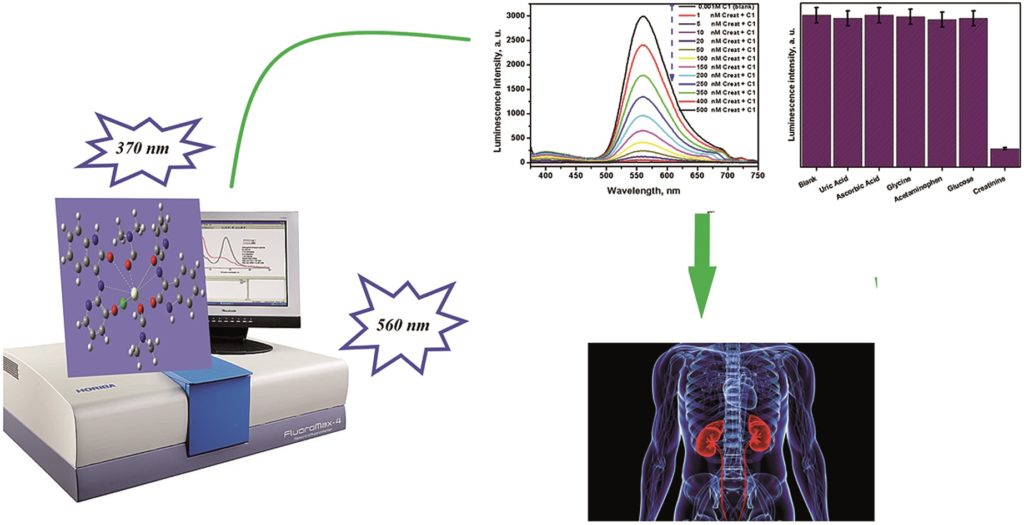We are very pleased to introduce Dr Sheta M. Sheta, corresponding author of the paper ‘A novel cerium(iii)–isatin Schiff base complex: spectrofluorometric and DFT studies and application as a kidney biomarker for ultrasensitive detection of human creatinine‘. The article has been very well received and handpicked by our reviewers and handling editors as one of our February HOT articles. Sheta was kind enough to tell us more about the work that went into this article and what he hopes to achieve in the future. You can find out more about the author and his article below and find more HOT articles in our online collection.
Meet the Author

Dr Sheta obtained his BSc and Masters degrees in applied chemistry from Helwan University, Egypt in 2004 and 2010 respectively. Following this, he joined the National Research Centre, Egypt in 2013 and obtained his PhD in inorganic-analytical chemistry from Ain Shams University, Egypt in 2015. His research interests include the preparation, characterization and application of metal-organic frameworks (MOFs), complexes, nanomaterials in general and specifically sensors, biosensors, medical laboratories, innovation and development of analytical techniques and methodologies for tumor markers, drugs and hormones determinations and biological activities studies as well as nano-catalysis and nano-ceramic materials. Dr. Sheta is also interested in nanostructured mesoporous materials and transition metal nanowires and particles, treatment of wastewater with conventional and advanced technologies, advanced oxidation technologies, nano-ceramic materials for advanced applications such as surface coatings and the reinforcement and conversion of CO2 to renewable fuel. In addition, he has experience in waste treatment/recycling and environmental pollution control, removal of bacteria and algae from fresh and marine waters. He has organized and coordinated local and international events and often speaks at international conferences/symposia. He serves as an Editorial board member and reviewer of several reputed international journals.
Could you briefly explain the focus of your article to the non-specialist (in one or two sentences only) and why it is of current interest?
This work introduced a novel and promising analytical tool for the detection and quantification of creatinine as one of the most important kidney biomarkers.
How big an impact could your results potentially have?
The results showed a simple, low cost analytical tool with a fast response time, high sensitivity, high accuracy/precision, reproducibility, applicability, a lower limit of detection/quantification than in previously published reports and good recovery in the determination of creatinine in various real samples (serum/plasma).
Could you explain the motivation behind this study?
• Strengthening the national income related to import many tools and devices like pregnancy strips, diabetes devices and more.
• Applying nanotechnology to synthesize smart and advanced materials that can improve the efficiency of the target device.
• Trying to produce a prototype that is more selective, sensitive, costs less and is simple and fast compared to those available on the market.
In your opinion, what are the key design considerations for your study?
• Preparation of a novel nanomaterial step
• Characterization step
• DFT study
• Application step
Which part of the work towards this paper proved to be most challenging?
The characterization of the prepared compounds.
What aspect of your work are you most excited about at the moment?
Studying the anticancer and biological activities of the prepared compounds and the transferring of the research methodology to small device.
What is the next step? What work is planned?
Based on the point-of-care testing (POCT) systems and near patient testing devices, we will to try to transfer the research methodology to small device.
A novel cerium(iii)–isatin Schiff base complex: spectrofluorometric and DFT studies and application as a kidney biomarker for ultrasensitive detection of human creatinine
Sheta M. Sheta, Magda A. Akl, Heba E. Saad and El-Sayed R. H. El-Gharkawy
RSC Adv., 2020, 10, 5853-5863
DOI: 10.1039/C9RA10133K , Paper
 Submit to RSC Advances today! Check out our author guidelines for information on our article types or find out more about the advantages of publishing in a Royal Society of Chemistry journal.
Submit to RSC Advances today! Check out our author guidelines for information on our article types or find out more about the advantages of publishing in a Royal Society of Chemistry journal.
Keep up to date with our latest HOT articles, Reviews, Collections & more by following us on Twitter. You can also keep informed by signing up to our E-Alerts.











